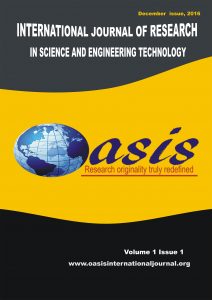The spatial dimension of unemployment in Zimbabwe
Dr Evans Chazireni
Department of Physics, Geography and Environmental Science
School of Agriculture and Natural Sciences
Great Zimbabwe University
International Journal of Science and Engineering Technology (IJRSET)
Oasis International Journal series
Vol. 1 No. 1
December 2016

Abstract
Zimbabwe currently faces a severe problem of unemployment. The challenges are being experienced in all parts of the country and in all sectors of the economy from primary right to the quaternary sector. Added to this is the problem of regional inequalities in the levels of unemployment. The paper examines spatial patterns of unemployment in Zimbabwe. Data on the levels of unemployment was collected from Zimbabwe National Statistical Agency (ZIMSTAT) (2014) published reports of the 2012 population census. Using quartiles, the country was demarcated into four regions of unemployment zones based on the rate of unemployment in the administrative districts. It emerged from the research that overall, the level of unemployment in Zimbabwe is very high and in addition, there is severe inequality in the levels of unemployment across the administrative districts in the country.
Key Words: Spatial dimension, Unemployment and Zimbabwe.

Open Access
This is an open access journal which means that all the content is freely available without charge to the user or his/her institution. Users are allowed to read, download, copy, print, search, or link to the full texts of the articles for their personal use, and/or use them for any other lawful purpose, without asking prior permission from the publisher or the author. This is in accordance with the BOAI definition of open access.
Oasis International Researchers Forum
Be a member of Oasis International Researchers Forum. A team that promote education globally, provide a platform for exchange of innovative ideas among academia, organize conferences, workshop and seminars where findings from various research studies will be intellectually discussed as well as encourage young researchers in their various field of studies.

Author Guideline
Papers submitted should follow the Oasis International Journal authors’ guideline and not be under concurrent consideration at another journal.
Any potential data overlap with previous studies should be noted and described in the letter to the Editor.
